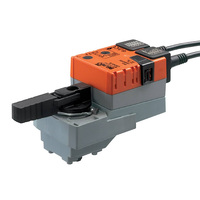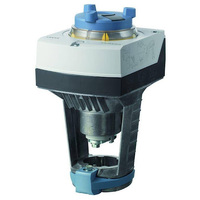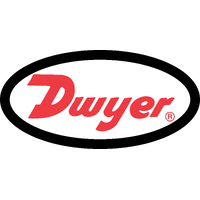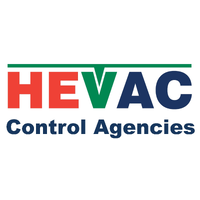Linear Actuator Uses: Applications in Various Industries
If you're an HVAC technician, BMS integrator, or building engineer having issues with a damper that won’t budge, valves acting up, or maybe you're still stuck adjusting things manually when they should run on their own. These problems usually boil down to one thing: how your system moves. That’s where a linear actuator comes in.
Linear actuators convert energy (from motors, air, or fluid) into straight-line motion. They move dampers, valves, arms, and panels without needing hands-on control. If a system needs to move something forward, backward, up, or down – precisely and repeatedly – it most likely uses a linear actuator.
This article will break down how they work, where they’re used, and why they’re critical in industries like HVAC, industrial automation, healthcare, and building controls.
How Does a Linear Actuator Work?
A linear actuator generates linear motion (movement along a straight line) by converting rotational motion from a motor or hand crank into push/pull force. It works with a lead screw or ball screw system inside.
Here's the basic process for electric actuators:
- A DC or AC motor turns a threaded rod (the lead screw).
- A nut or carriage attached to the screw moves linearly as it turns.
- This nut connects to the primary rod shaft, which extends or retracts with control.
In electric linear actuators, that motion is digitally controlled, perfect for tasks needing precise positioning, smooth operation, and tight tolerances. They’re widely used in building automation, medical equipment, robotics, and more.
Linear actuators are essential in systems where motion must be accurate and repeatable, like robotic surgical tools and solar panel tracking systems.
What Can Actuators Be Used For?
Actuators are everywhere once you start noticing. Let’s run through some real-world linear actuator uses examples:
- HVAC Systems: To control air dampers and water valves in chilled/hot water loops. Without actuators, your BMS can’t regulate temperature efficiently.
- Industrial Automation: Used in robotic arms, conveyors, and packaging machines to control movement accurately and safely.
- Medical Devices: These include hospital beds, dental chairs, and imaging equipment, all using linear actuators for fine adjustments.
- Automotive Manufacturing: Used for automated welding, stamping, and even within the car (adjustable seats and trunk lifts).
- Solar Tracking Systems: They move panels to follow the sun using micro linear actuators for energy optimisation.
Bottom line: If there’s a need to move something in a straight line with precision, actuators are probably involved.
Read More: What Are The Different Types of Actuators and Their Applications
Types of Linear Actuators
Not all actuators are the same. Let’s look at the five main types of linear actuators used in HVAC, industrial automation, and beyond.
Electric Linear Actuator
This is the most common in HVAC applications. An electric linear actuator uses an electric motor (AC or DC) to drive a lead screw, converting rotational motion into straight-line movement. Ideal for precise control with minimal maintenance.
- Best for: HVAC valves, robotics, and medical devices
- Power source: Electricity
- Use case: Honeywell or Siemens valve control systems
Hydraulic Actuator
These use pressurised incompressible hydraulic fluid to move a piston inside a cylinder. They offer high force output, great for heavy-duty industrial applications.
- Best for: High-force applications like presses or lifting machinery
- Power source: Hydraulic systems
- Key trait: High torque and strength, but more maintenance-heavy
Pneumatic Actuator
These run on compressed air, offering fast movement but less precise control compared to electric actuators. They're cost-effective and often used where speed matters more than pinpoint accuracy.
- Best for: HVAC dampers, safety shut-offs, light-load applications
- Power source: Compressed air
- Popular in: Cleanrooms and food manufacturing
Mechanical Linear Actuator
This includes devices like rack-and-pinion systems, lead screw drives, and belt drives that convert rotary to linear motion through mechanical means alone.
- Best for: Manual or semi-automated systems
- Power source: Manual or mechanical motor drive
- Often found in: Low-budget or low-power systems
Piezoelectric Actuator
The most precise of the bunch. These use piezoelectric materials that expand or contract with voltage, generating ultra-fine linear motion.
- Best for: Precision instruments, optics, nano-tech
- Power source: Electricity
Used in: High-end lab or imaging devices
Frequently Asked Questions
What is the primary purpose of an actuator?
The main job of an actuator is to convert energy into motion, specifically, to move or control a mechanism like a valve or damper. In HVAC, it's the bridge between electronic control signals and mechanical action.
What are the uses of linear motion in our daily life?
Linear motion is everywhere: electric recliners, printers, automatic windows, and even adjustable hospital beds. In HVAC, linear actuators open or close dampers, regulate valve positions, and help maintain building comfort.
What are the applications of linear and rotary actuators?
Linear actuators are used where movement in a straight line is needed, like opening valves or pushing something along a track. Rotary actuators, on the other hand, provide rotational motion and are used in applications like turning wheels, rotating antennae, or swivelling robotic joints.
How do electric linear actuators play a role in precise control?
Electric linear actuators are known for precise positioning and repeatability. Because they use motors and encoders, they’re perfect for tasks that need controlled, consistent movement, ideal for automation and building management systems.
Why choose electric actuators over pneumatic or hydraulic?
Electric actuators offer low maintenance, clean operation, and better precision. Pneumatic actuators may be cheaper upfront but need ongoing compressed air supply. Hydraulic actuators offer power but come with leakage and servicing issues. Electric systems are more efficient for HVAC and automation.
So, Which Actuator Is Right for You?
If your HVAC system needs precise, reliable valve control, electric linear actuators are your best bet. But if your project requires high force or speed, or you're working in a highly automated industrial environment, other types might be a better fit.
Still unsure which actuator suits your needs?
Check out our catalogue at Controls Traders. We've got over 40 years of combined experience in HVAC controls and industrial automation, which has helped us stock the best. Our team can also help you pick the right actuator, whether you're looking for Honeywell, Johnson Controls, Belimo, Siemens, Schneider Electric, or other trusted global brands.
You can shop by brand, shop by product, send us a message or call us at 1300 740 140 for enquiries.
Leave a comment
Popular Posts

What Is A Solenoid Valve?

How Does a Belimo Actuator Work?

Linear Actuator Uses: Applications in Various Industries





























